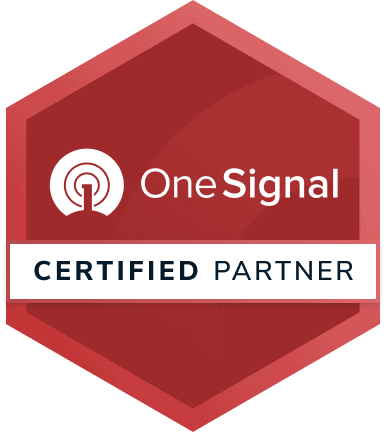6 Useful Tips To Boost App User Activation (App Growth Blog Series Part 6)
We’ve spent the last 5 parts of this App Growth Blog Series talking about the user acquisition stage of the funnel – both in terms of paid (ASA, Facebook Ads) and organic growth channels (ASO, social media and content marketing).
Getting your app installed is the crucial first step, but it definitely doesn’t stop there. Once the app is downloaded on their mobile device, users need to be led into the next phase of the funnel – user activation.
User activation is educating the user about your app and making them experience the app’s “aha moment” as early as possible.
Here we’ll share how to effectively activate users with examples from various mobile apps (clients of App Growth Network).
1. Showcase the app’s benefits vs. features
Grabbing users’ attention when they first open your app is the key to getting these very users to the next step of their app journey. So, upon opening, share how the app is solving a certain problem instead of talking about app features.
This is often done in a “tutorial section” like the one found in the Tapping Solution app. You can see in the screenshots below that the user is instantly reminded of why they downloaded the app and how this app will help them.
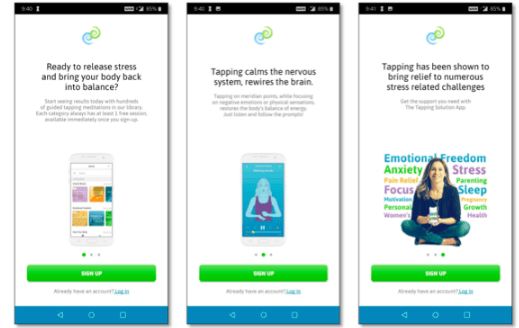 2. Simplify the ‘Sign-up’ process
2. Simplify the ‘Sign-up’ process
We recommend that you keep the sign-up process simple if you want to increase mobile app engagement. This means asking a user to input the minimum amount of information during the onboarding process. Ask for more details only as the user moves further into your app journey.
This process allows users to experience essential product features first. Once a user finds your product suitable for their needs, they’ll be happy to invest more time and will be more open to sharing additional details.
Here is how Tapping Meditation designed its sign up process:
- The initial sign up is minimal. The app developers kept it even simpler by providing the option to create an account using Google/Facebook.
- Once a user provides their email and password, the app asks for their categories of interest so that only relevant content is shown to users in the app.
- The user then experiences a follow up 2-3 minutes introduction video to guide them through the session experience.
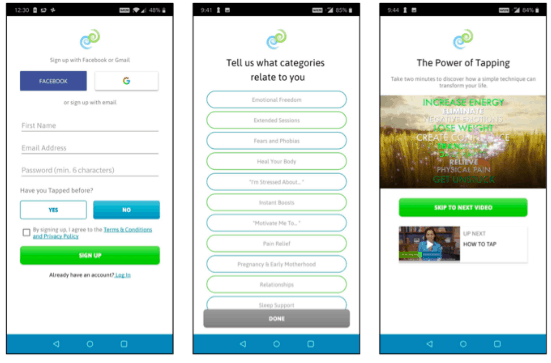 3. Keep user activity moving forward with tailored communication
3. Keep user activity moving forward with tailored communication
Using your app analytics tools, check out users paths/screenflow along with the average time it takes for a user to move from one step to the next.
In order to learn more about obstructions in your flow, we recommend building funnels to figure out the maximum drop off points along the path. It’s worth trying to activate users who are inactive or haven’t moved to the next step in the average time you’ve calculated.
This is how App Growth Network built a customer journey campaign for their document-focused app client using Braze. The goal of the campaign was to persuade users who had newly installed the app to complete the app registration.
So, based on whether a user had registered or not, users were sent push notifications on day 1, day 3 and day 5. The messages specified how the app for document signing can help save time, keep documents organized and empower business.
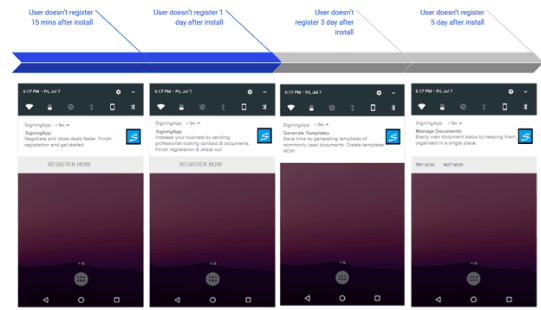
4. Let users experience all product features
Using a freemium model lets your users experience your app’s core features for free at least once, which often help decrease churn rate. If a user experiences the app features firsthand and stays over a period of time, it’s more likely that they see value in your app and can be converted into paying customers. For example, Netflix, Linkedin, etc. offer a one month of free trial for the premium version.
Here is an example of another way of letting your users experience product features. Relax Melodies allows users to experience some part of each section for free and offers an upgrade to paid/pro version for more.
5. Avoid notification overload
It goes without saying that sending too many notifications won’t improve mobile user engagement. So be sensible here and always ask user permission. Otherwise, you’ll only annoy users and will result in multiple uninstalls of your app.
Here is an example from Himoment where they ask for permission to access photos when the user is about to add a moment (What was the best thing that happened to you today?) instead of asking this at the very beginning.
6. Connect via multiple channels
User engagement is higher with personable communication. You can engage with users using multiple channels like email, push notifications, in-app notifications, retargeting on social channels, etc. The channel selection should be made based on the stage of a user journey and the communication that is being delivered.
So, there you have it! Some of our simple to-do steps to increase app user activation. Next, stay tuned into our App Growth blog series as we share some important app retention info. Stay tuned!
If you’d like a free one-stop resource to all of our App Growth tips right now, download our “How To Grow Your App” e-book here!
Related Articles
For Wellness apps, the most challenging approach is the conversion of the user from passive to active. [...]
In the realm of App Store Optimization (ASO) for iOS applications, a relatively untapped yet highly effective strategy [...]
In today's competitive app market, it's crucial for app developers and marketers to reach a wider audience and [...]









